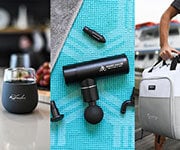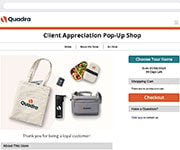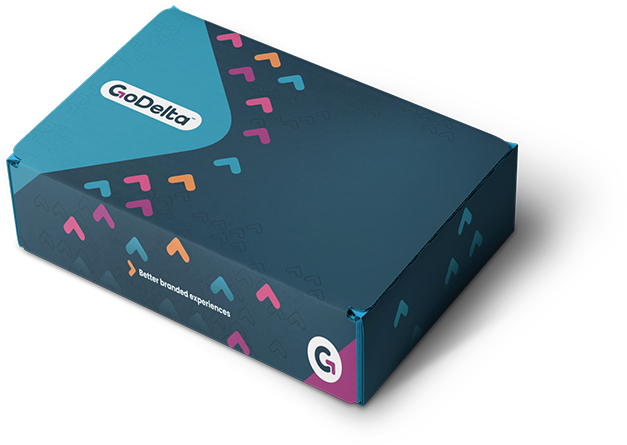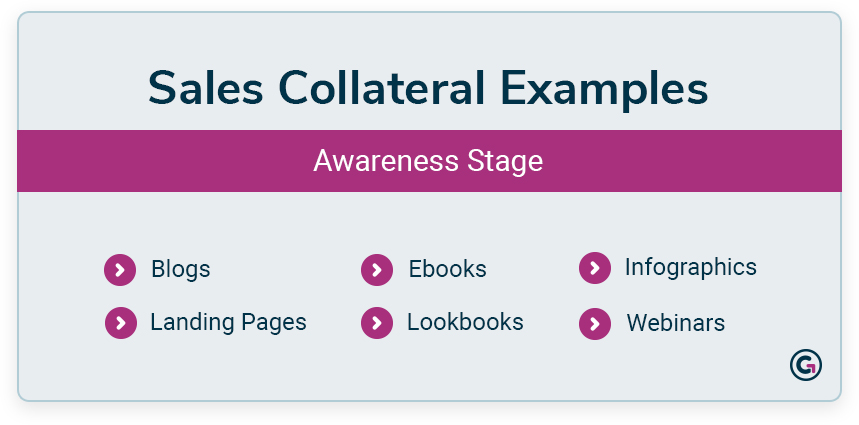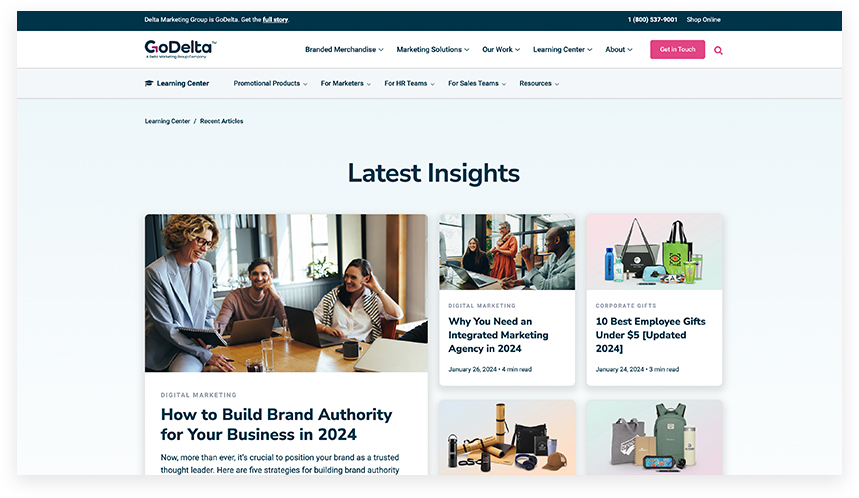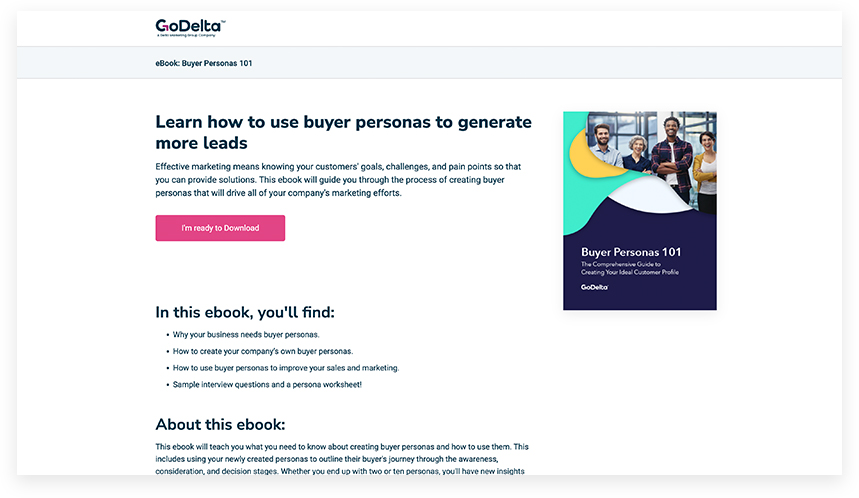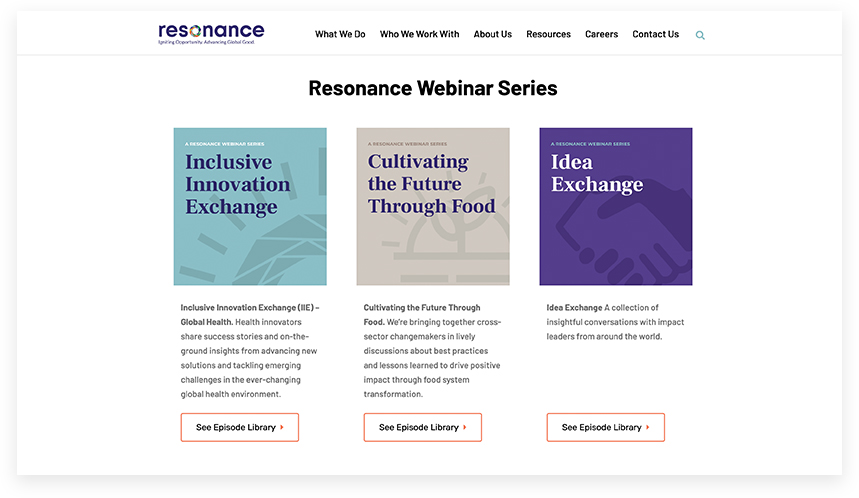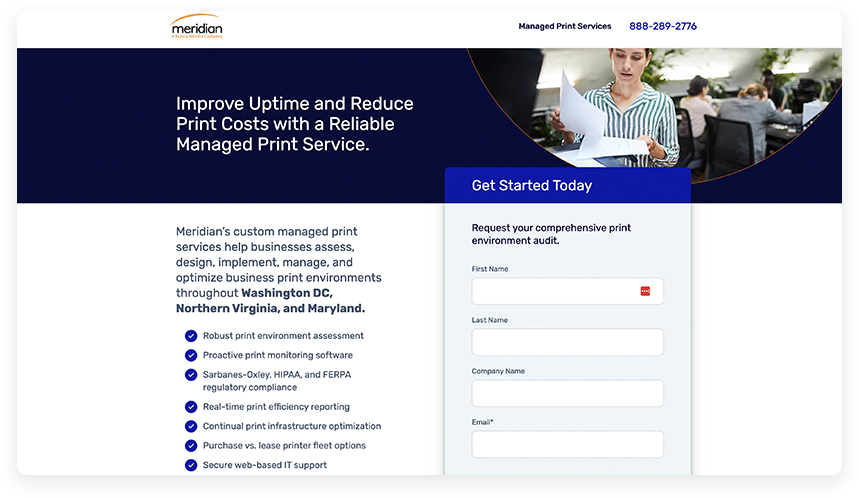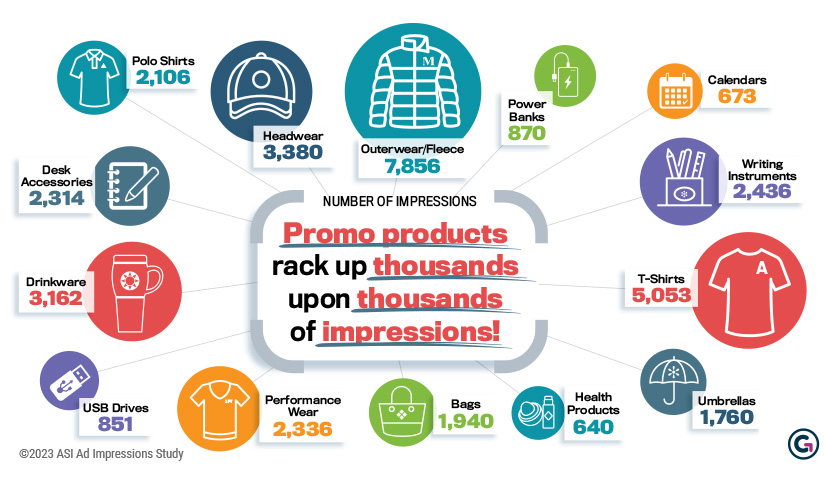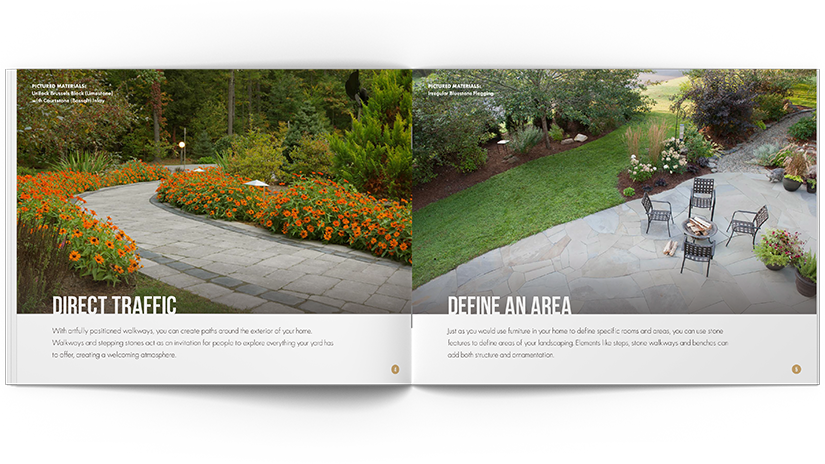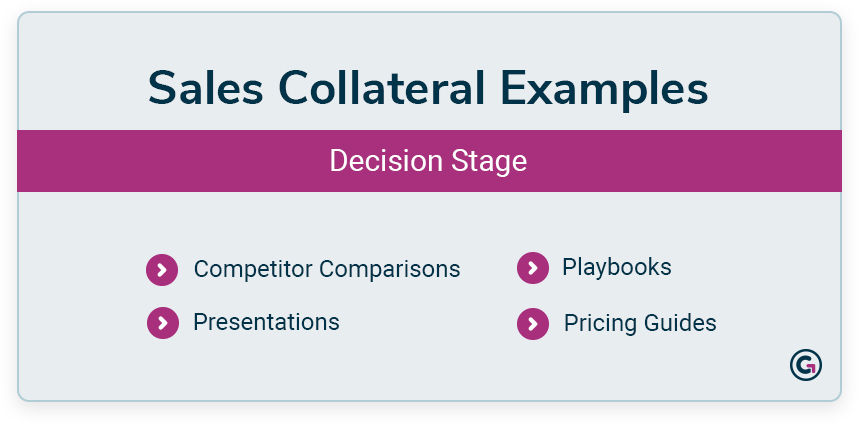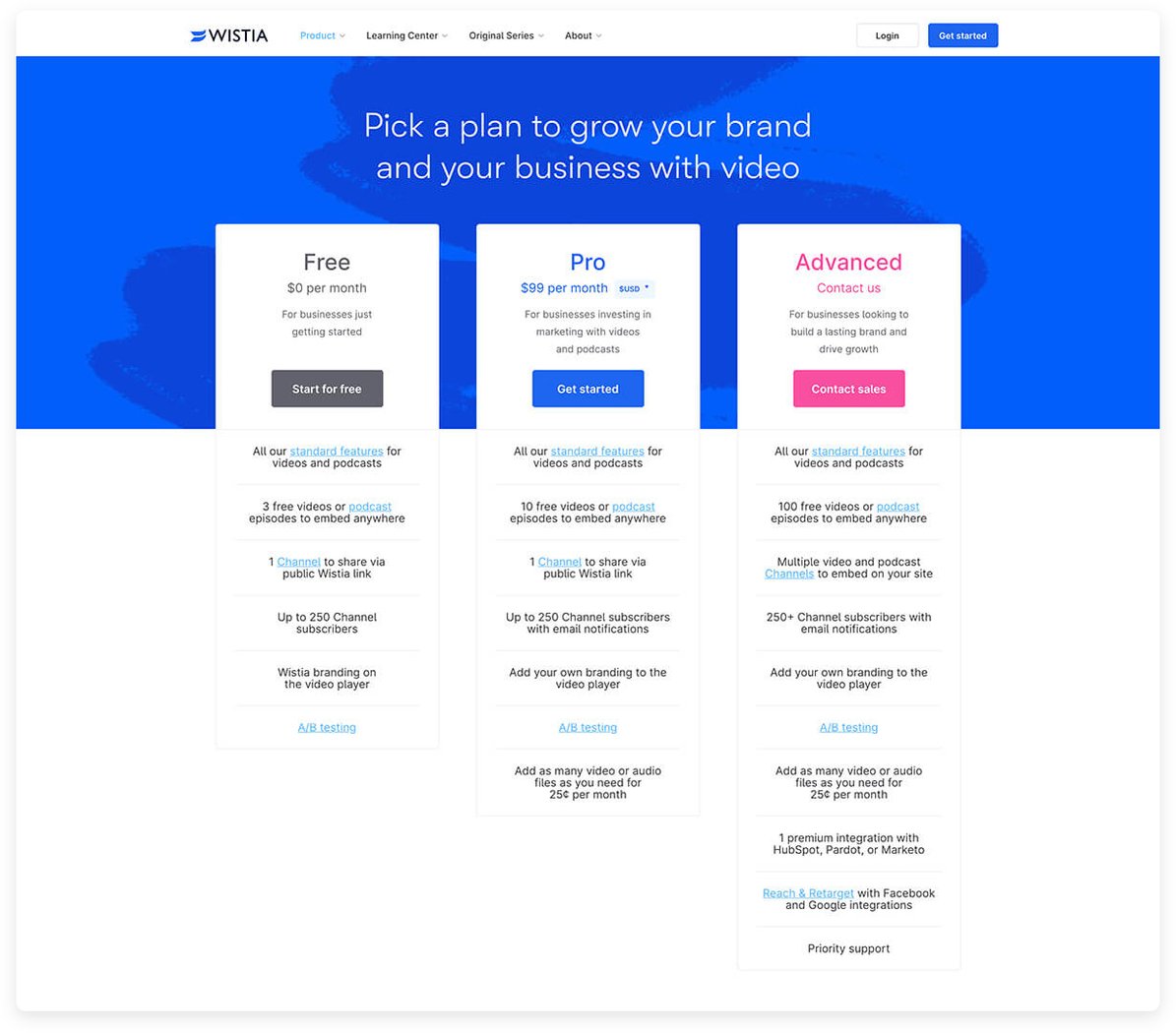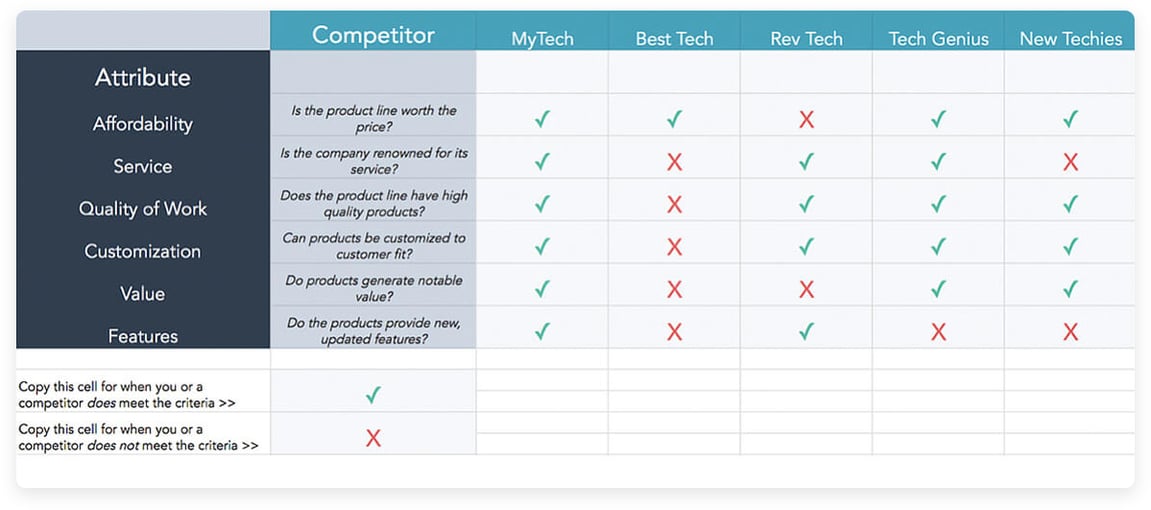In the consideration stage, prospects have clearly defined their problem, and are researching solutions. They might be considering your products or services, but they are also looking at alternatives.
Prospects are more educated than ever before and thus more skeptical. Competition is high, as buyers weigh options more carefully and seek out reviews and comparisons more readily. So it’s crucial sales teams have middle-of-funnel content to convince skeptical buyers of the value of their solutions. Your consideration stage collateral should articulate the value of your products/services and illustrate how they will ease your buyers’ pain points.
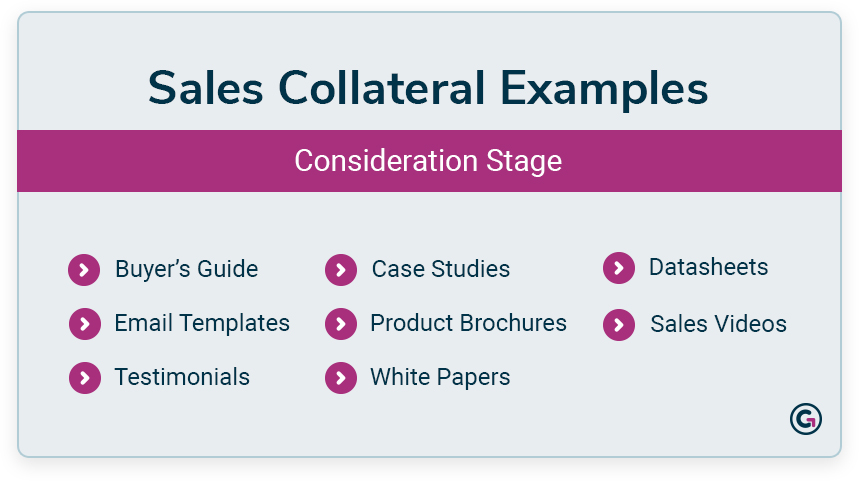
7. White Papers
White papers are long-form, in-depth pieces of content that offer technical information targeted to your buyer persona. The idea is to paint your company as a thought leader on a particular topic relevant to your industry.
When reps leverage this type of sales collateral, they make decision-makers feel more confident. Remember, buyers like to feel they did their due diligence before committing to a purchase. White papers can help them feel educated and empowered, while still swaying them towards your products or services.
Here are some quick tips for creating a high-quality white paper:
- Cite all sources
- Format as a PDF
- Limit to six pages or less
- Use a professional and authoritative tone
- Fact-check research and proofread before publishing
- Select a topic that is relevant and valuable to your audience
White Paper Example
Here’s an example of a white paper from Konica Minolta, an industry-leading technology company. Note the clear structure with defined subheadings. Each section is dense but digestible, providing in-depth research, unique insights, and paragraphs packed with facts and recent data.
8. Testimonials
Testimonials should be short, sweet, and to the point. They’re typically quotes (1-2 sentences) from satisfied customers and are especially helpful for prospects who might not have time to dive into a whole case study.
Sales reps can share testimonials to build credibility and reassure skeptical prospects about the quality of business offerings. When prospects see other people who had the same concerns explain their stories and why they were satisfied, it increases the likelihood of them believing that your product/service is the optimal choice.
Testimonial Example
We love testimonials at GoDelta and sprinkle them on service pages, landing pages, and case studies. Here’s an example of a testimonial from a satisfied client who needed virtual event swag boxes. Notice how the quote expresses strong positive emotions and appreciation. This language suggests excellent customer service, which potential customers will appreciate.
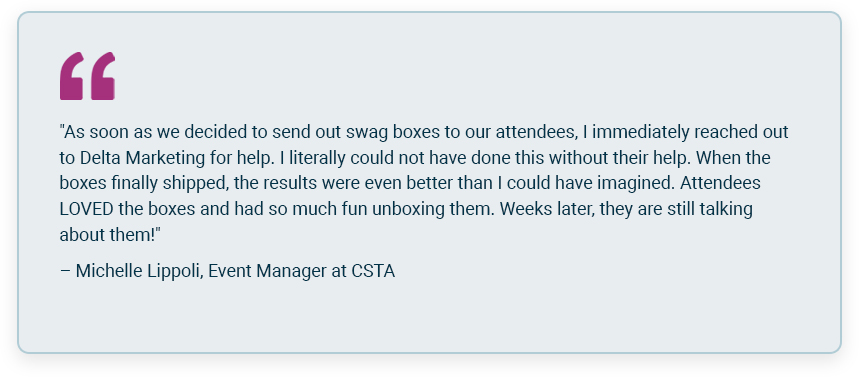
9. Case Studies
Case studies are basically extended testimonials. They tell a persuasive story of how your product or services helped another client. The best case studies follow a repeatable format, making it easy for the buyer to read and find the success story you're trying to get across.
Case studies often follow a structured format that includes the following elements:
- Project overview
- Quote/social proof
- Client challenges and goals
- Solutions provided
- Data-driven results
Case Study Example
Here’s an example of a case study we created for one of our digital marketing clients. It includes a quote from the company’s president, the challenges they faced before using us, the solutions we proposed and delivered, and the measurable impact of our services. Our sales team uses this piece of sales collateral to show prospects what we’re capable of and the kind of success clients achieve when they partner with us.
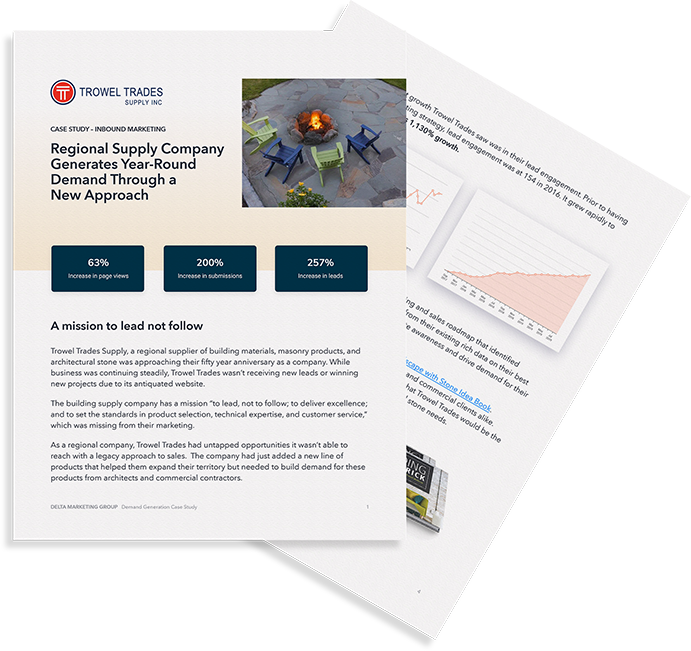
10. Buyer’s Guide
A buyer's guide, also known as a buying guide, helps consumers understand what to look for and consider when buying a specific type of product or service. The best buyer's guides often include comparisons between different brands or models, highlighting their pros and cons. This is a great way to show, not tell, customers why they should choose you over someone else.
Here are some other key elements of buying guides:
- Product or service overview, including its purpose and how it works
- Reliable places to purchase the product or service
- Key features to consider
- Reviews and ratings
- Price ranges
- FAQs
Buyer’s Guide Example
Here’s an example of a buyer’s guide for multifunction printers (MFPs). This guide goes into depth about what an MFP is, the benefits, the different types, and key features to look for. It also includes details about different models so readers can make an informed decision on which machine best fits their needs.
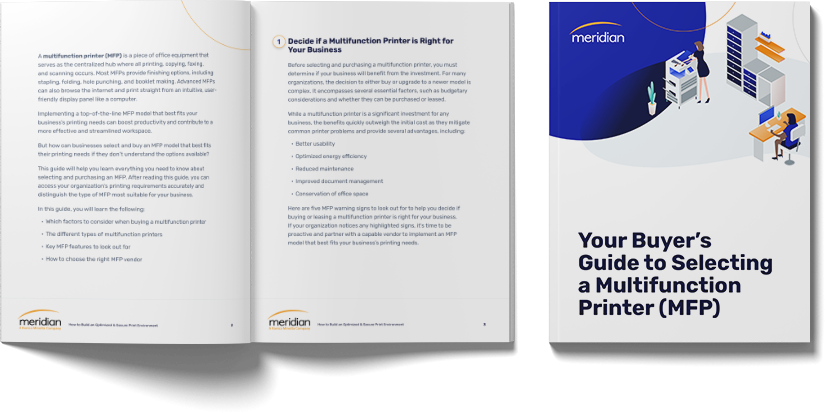
11. Product Brochures
Product brochures are branded documents that highlight key product features and benefits. Brochures often include high-quality images, compelling copy, and a clear call-to-action. They can come in various formats, such as bi-fold, tri-fold, or booklet forms, and can be distributed physically or digitally.
Sales reps can mail printed brochures to potential clients as part of a direct mail campaign or share digital versions via email or on social media. They’re also typically used at trade shows or in-person conferences as leave-behinds for interested attendees.
Product Brochure Example
Here’s an example of a product brochure for our client Flexaseal, a leading provider of industrial sealing technology. Notice how this multipage document includes a brief history of the company that establishes context, before launching into the details of their products and services. A glossary of industry-specific terms is included to further educate the prospect.
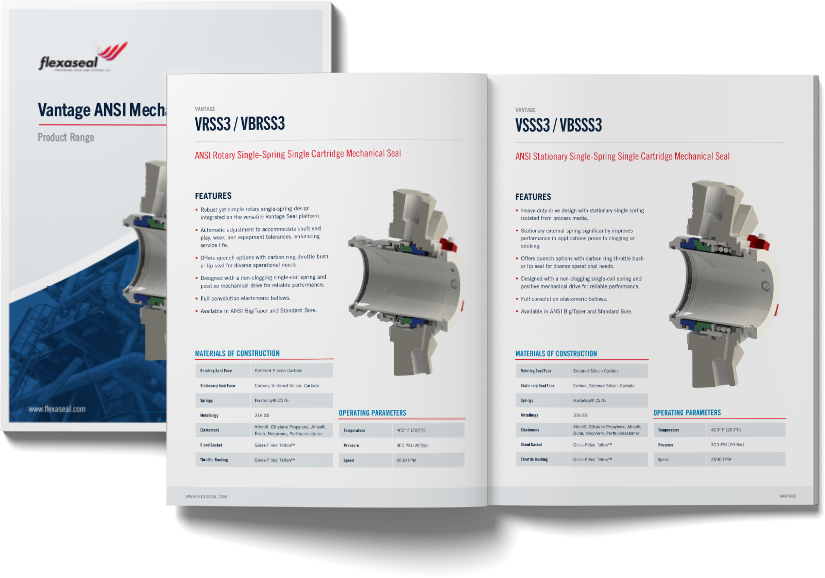
12. Datasheets
Technical datasheets, also known as product spec sheets, are one-pagers that generally include information like technical specifications, product features, performance metrics, compatibility information, and benefits. Think of a datasheet almost like a more technical flier.
While datasheets are often quite technical, they are invaluable for sales reps selling complex or technical products. They help communicate the product's value proposition clearly and concisely, making it easier for the prospect to understand the product and make an informed purchasing decision.
Datasheet Example
Here is an example of a datasheet for Flexaseal. Notice how it contains technical information about the product, an image, as well as contact information for the company. The features are listed in a bulleted list, short and to the point.
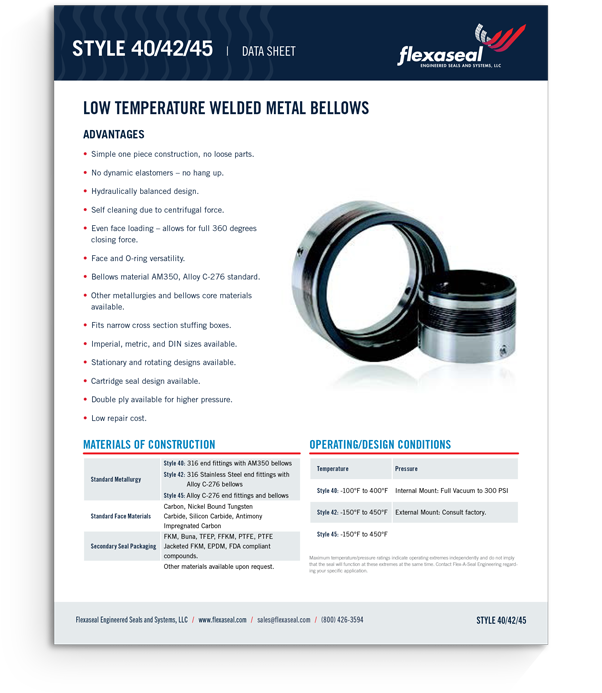
13. Email Templates
Email templates are a great sales collateral tool for streamlining the sales process and saving valuable time. They can be used at any stage of the buyer's journey but are often most effective when a prospect is still considering their options.
If a prospect is taking some time to make a decision, check-in email templates can help maintain communication and keep the sales rep top-of-mind. It’s also easy to attach other pieces of sales collateral onto these email templates, which is an effective way to build trust and further educate prospects who haven’t committed to your product/services yet.
Email Template Example
CRMs like HubSpot offer customizable email templates that allow sales reps to quickly personalize and send emails. Simply write master versions of common outreach emails and save them as templates. Attach marketing collateral such as guides, eBooks, or proposals to educate prospects and highlight the value of your product.
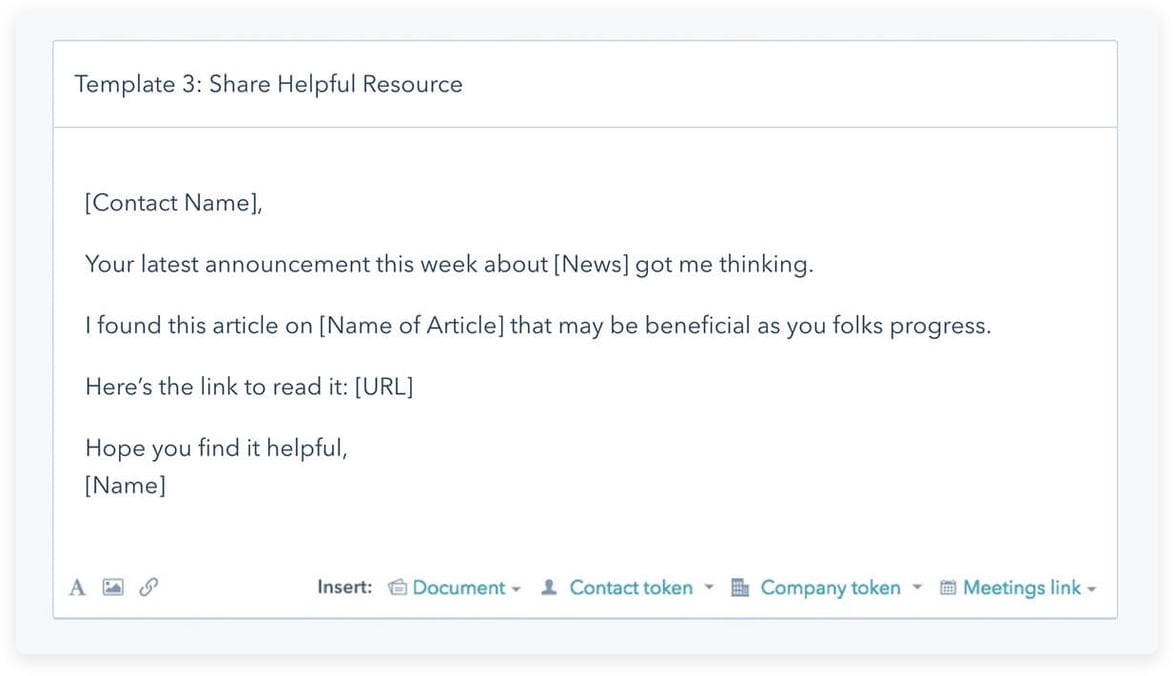
14. Sales Videos
Sales videos are a way to put a face to your brand while humanizing your reps in the process. Product unboxings, explainer videos, or product demos can all be used to explain your products or services in a more visual and helpful way. In fact, sales reps who use video within their emails are reported to see 8 times higher open-to-reply rates. And personalized video has been seen to close more deals and improve customer retention rates.
Sales Video Example
Below is an example of an effective sales video that highlights key product features and information on how it can be installed. It’s short and informative but still engaging for the viewer.
